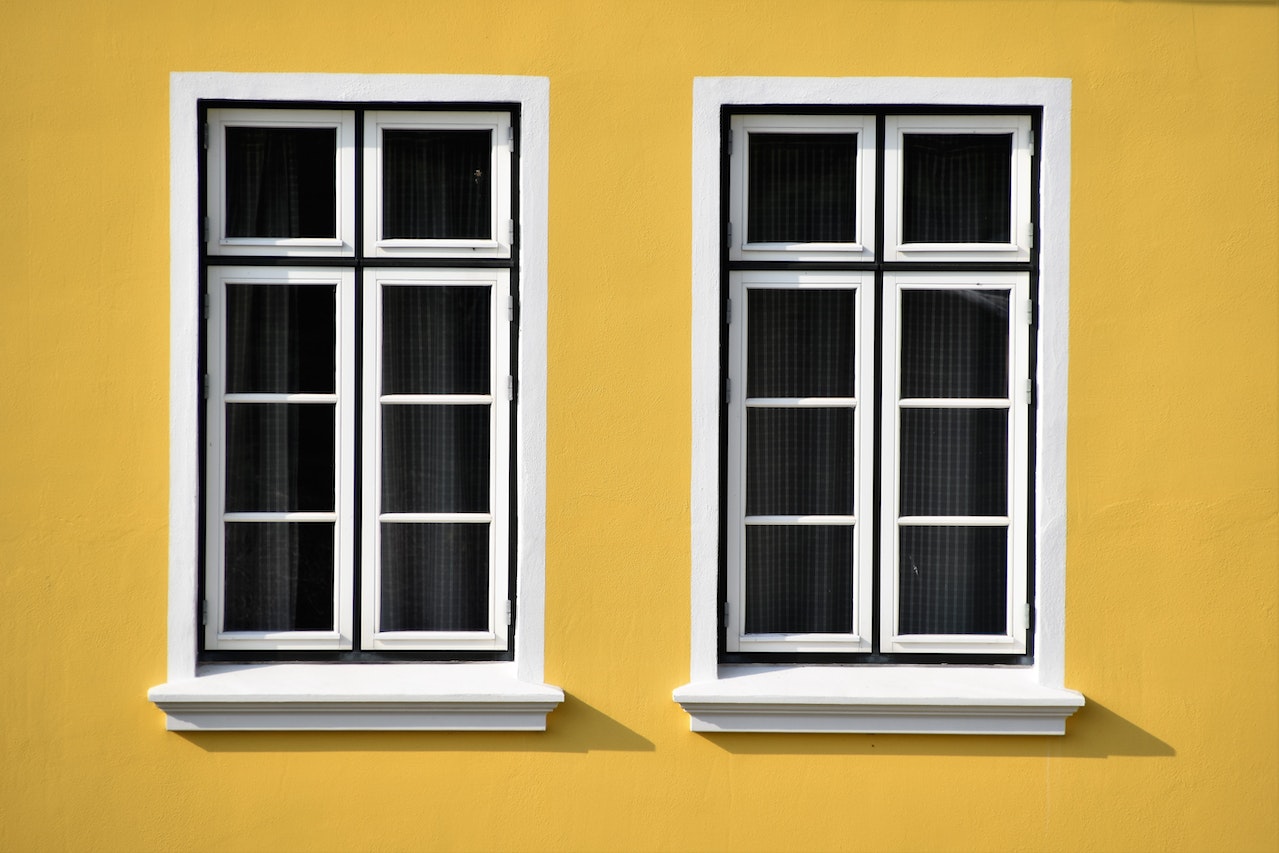Window Options - which type of windows should I buy?
Choosing the right windows can be complicated, with multiple styles, frames, glazing and finishes! There are countless window options, from classic bays and sashes to contemporary bi-fold sliding doors and attic skylights.
Today we've broken down some of the most popular window options to help you decide which is right for your home.
If you're looking to speak to an expert in your area about your window options, fill out the form below and we'll put you in touch with rated experts in your area - for free! Time to complete: 30 seconds.
Window Style Options
You might know the size and shape of the window you'd like, but you have several different styles to choose between, depending on how you'd like your windows to open and other factors such as security and access to outdoor spaces.
Below we look at the most common window styles to explain how they work and how your new window units can be hung.
Checkout this video which talks you through some of the options to consider when selecting your windows:
Get quotes for new windows
See how we work below.
Casement Windows
A casement window is usually hung on a side hinge, although you can choose:
- Top light casements, where the window is split into a fixed panel and a casement window at the top, opening outwards.
- Top hung windows with an awning, providing protection from rain and hinged at the top of the panel.
- Bottom hung casements are usually found in basements with a hinge at the bottom.
- Casements hung on a central hinge, with a wider opening but suitable for narrower opening clearance.
Casement windows are normally the most cost-effective option since they're manufactured in standard window sizes - one of the problems may be for families with children or pets since the wide opening profile can cause a safety concern.
Tilt and Turn Windows
This type of window opens inwards, typically opening downwards from the top of the window unit, or like a reverse casement, with the hinge on the side but the glass opening inwards.
Tilt and turn is a more modern style than a casement window, and they're great in homes with limited space.
Sash Windows
Traditional sash windows can be constructed in several ways, typically with one or two sashes divided into smaller panes.
Usually, the glazing is one panel divided by horizontal or vertical frames. However, you can have bespoke sashes made with individual glazing panels, most often in listed buildings where a replacement window must replicate the original.
Sashes don't come in standard sizes and are generally customised - they also require a little maintenance to keep the tracks running smoothly.
Roof Windows
Skylights, roof windows and lanterns are used in loft conversions and homes where you can redesign darker spaces to allow in natural light and ventilation.
A rooflight involves fitting a window into a roof, either flush with the roofline or within a recess. You can fit fixed rooflights, manual opening windows, or even electrical rooflights operated with a remote control.
If your rooflight is fixed, it's usually referred to as a skylight.
Bay Windows
Bay windows extend outwards from the front of your property, creating extra space on the inside, often used as a window seat.
While most familiar with Victorian and Edwardian properties, bays can look fantastic on new developments and renovations. They can span upwards across the face of your home, with a full bay across more than one floor.
You can use a bay window to create a window seat or breakfast nook in a kitchen area, and again there are several different bay window style options:
- Canted bay windows are made with a straight, even front aspect and sides angling back to join the walls.
- Bow bays have a curve for an elegant, sweeping look within the unit.
- Oriel windows are very traditional windows, usually beginning from just above the ground and installed with brackets to support the load borne by the external walls.
These are just a few window options available, so it's always worth consulting a window fitter to see which styles they would recommend or as inspiration!
If you intend to replace several windows - say one bay and several casement windows - there are economies of scale since your contractor can combine factors such as waste removal and scaffolding for all parts of the project.
A qualified window fitter will usually offer a range of window styles, so you can have your windows replaced simultaneously, even if that includes a mixture of window types.
Window Glazing Options
Just as you have numerous options for the style of your window, the glazing inside the frame is equally versatile!
Most homeowners opt for double-glazed windows and can choose a like-for-like replacement with a new, energy-efficient frame fitted with insulative glazing that is a great way to reduce your heating bills and cut out energy wastage and cold draughts.
You'll find that double-glazing also improves security (a UPVC frame has a steel sub-structure that is extremely hard to tamper with) and prevents condensation and dampness from getting into your property.
There are other options you may wish to consider, often related to the location of your home:
- Slimline secondary glazing isn't quite as efficient as double-glazing but can be a solution for older properties or those in conservation areas. Your window fitter will install an additional window unit over the existing glass as an extra insulation layer. You keep the same appearance and traditional frame but benefit from improved warmth.
- Triple-glazing is more expensive than double-glazing, but it's also the gold standard in energy efficiency. Homeowners benefit from the highest possible thermal insulation properties, with an added perk of sound protection, essential if you live near an airport or busy road.
- Privacy glass panels are often used in properties with windows overlooking a public footpath or roadway and are very common in bathroom windows. You can choose varying obscurity levels depending on the room and which parts of your property are overlooked.
Many window fitters will offer all of these glazing options and treatments or films, such as eco-friendly glazing with additional UV reflection properties, so it's worth asking for their recommendations if you are unsure which option is best.
Window Placement Options
Although you might have an obvious placement choice, if you're replacing older windows, you may have the opportunity to reconfigure the appearance of your home or open up a space with an abundance of natural light through a smart window placement.
There are three main things to consider:
- Where windows would work best in the layout of your room.
- What shape and style windows you'd like.
- Whether the window is suitable for a range of placements.
An experienced window fitter can help by surveying your home and providing advice around the right windows to suit your property - for example, a property with a lower roofline looks great with horizontal windows to complement the structure.
Period cottages may look very unusual with slimmer frames or picture windows, whereas a sash will appear authentic and enhance the outside appeal of the building.
Architects tend to use a pre-set ratio to calculate the perfect window size and placement, so if you're stuck, you can look at other properties you like and gauge how well your choice of frame will work.
Window Material Options
There are four main material options for your windows:
- UPVC
- Timber
- Aluminium
- Composite
We'll focus here on UPVC and timber as the most prevalent options.
UPVC is undoubtedly the most widely used window material - it's the cheapest, is widely available, and doesn't warp or shrink, so it is suitable for all types of frames and properties.
You can source UPVC in different colours and finishes, including wood effect frames, and it requires pretty much zero maintenance to remain in excellent condition.
The downsides are that UPVC windows can be a little chunkier than a heritage timber frame, and some people dislike the aesthetic of white plastic.
Timber is the other favoured choice, and it's an authentic natural material that looks incredible on period properties. You can achieve lasting effects with detailing, varnish and staining, and choose from economical softwoods or premium hardwoods like mahogany and oak.
If you opt for timber, the main pitfall is the ongoing maintenance, with pre-treatments and regular painting to avoid dampness, rot and distortion in the frame as it ages and the property shifts.
Frequently Asked Questions - Window Options
Below we've answered some of the commonly asked questions about the range of window options on the market.
How Much Do Different Window Options Cost?
Prices can vary considerably, depending on your project and the materials.
As a rough guide, UPVC tends to be the cheapest. It is followed by softwood, with an average price of £5,000 to £20,000. Your costs will be at the top end of the spectrum if you're replacing all of the windows in your home.
Aluminium or composite windows are a slightly more expensive choice, with a full re-glazing project costing £8,000 to £25,000.
How Can I Compare Quotes for the Same Window Options?
We recommend getting three quotes from reputable local window fitters to compare the pricing offered.
Some glaziers will provide an inclusive price, comprising everything from removing the old frames to plastering around the new unit.
Still, it's essential to ask for a detailed breakdown, so you know what is and isn't included.
Get quotes for new windows
See how we work below.


